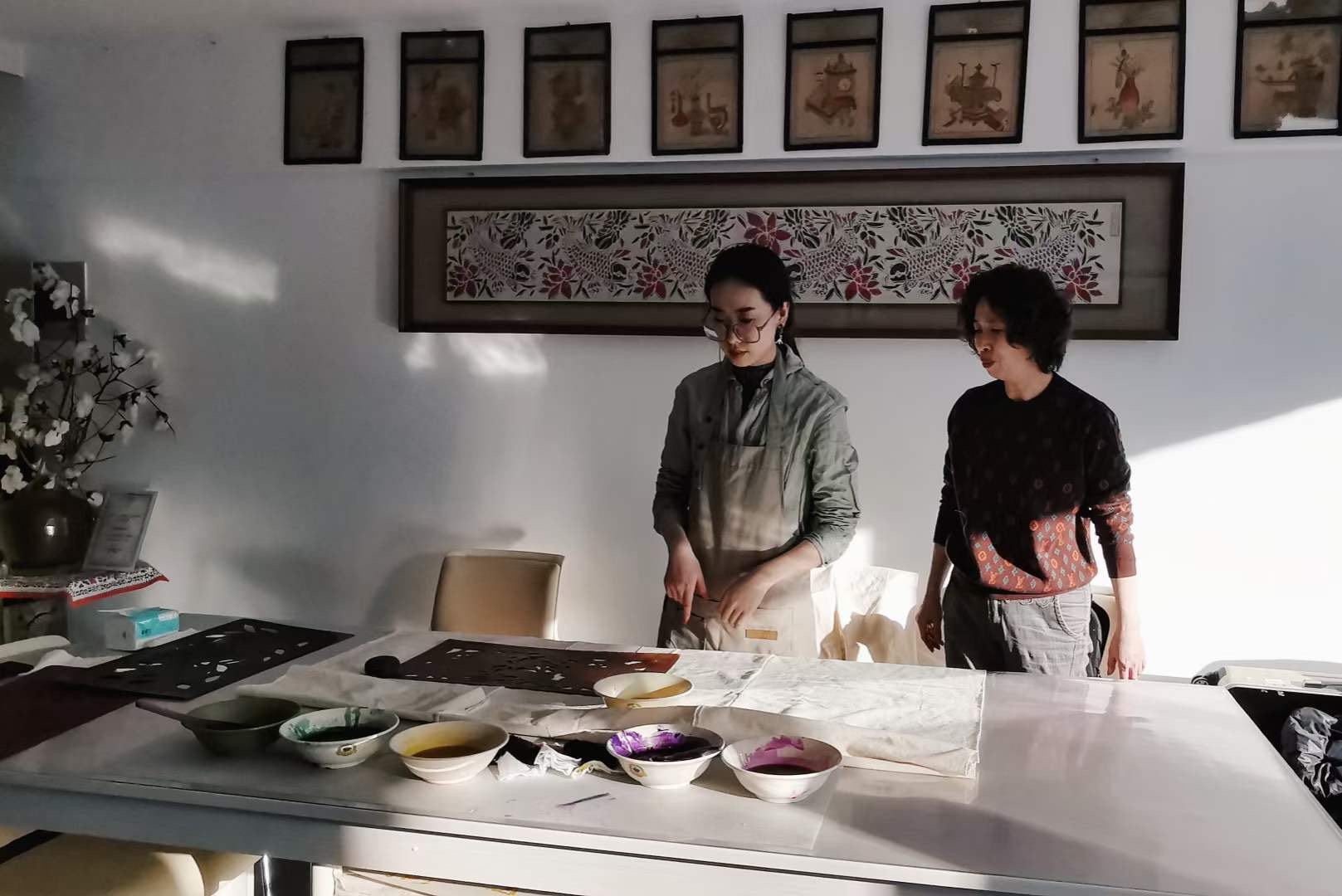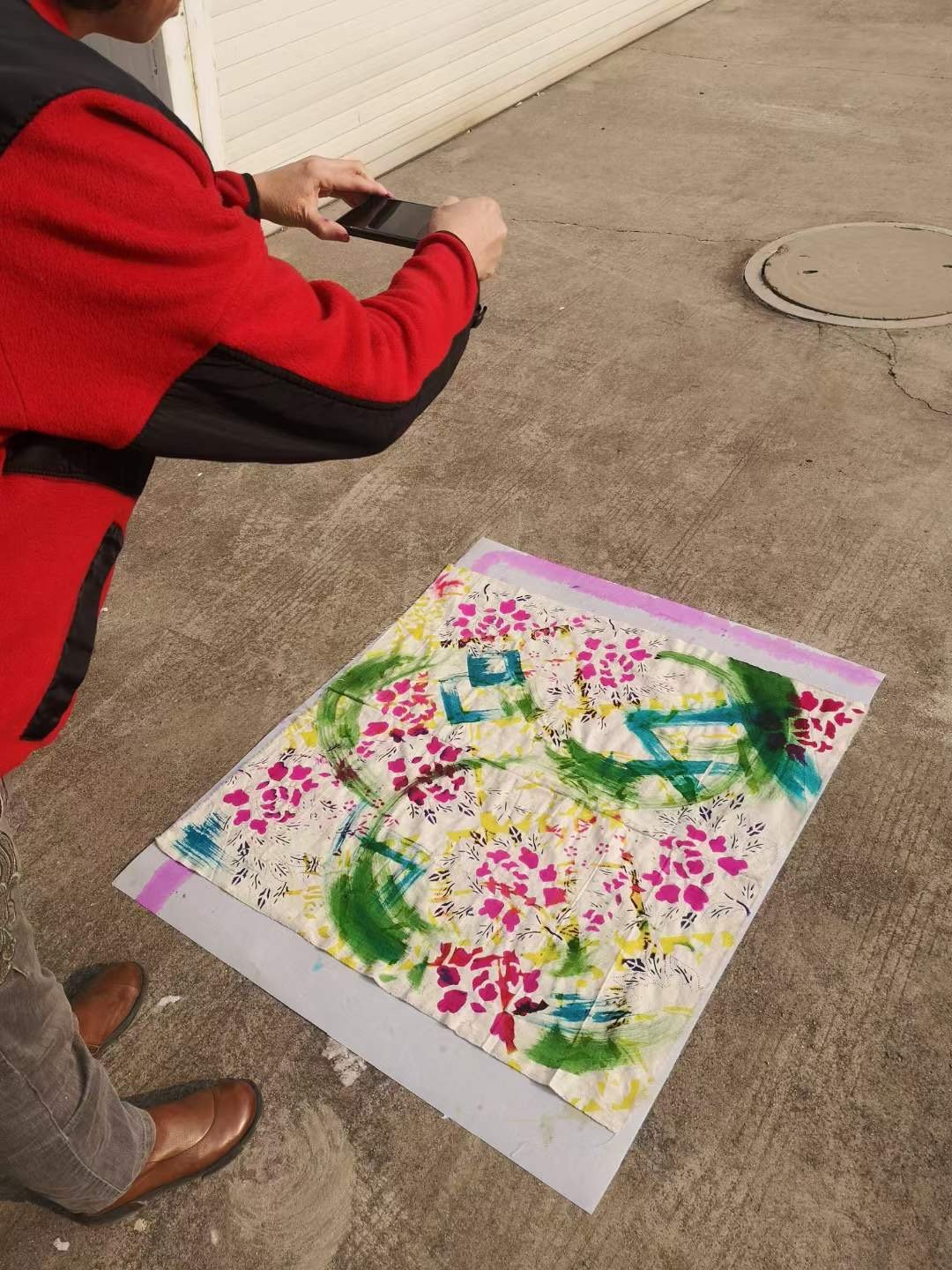Guo Suqin· Pingyang Printing & Dyeing
Guo Suqin is an inheritor of the Pingyang Printing and Dyeing Intangible Cultural Heritage. She began her research out of interest and embraced her dream with pure faith.
Guo Suqin said that the scene of her old aunt and her husband engaged in printing and dyeing once aroused her love for traditional crafts. "Since I was a child, I like these, love to see the old objects, the old aunt in the hands of those colourful printing and dyeing cloth has always been unforgettable to me. When I had time after retirement, it was natural for me to study it." The artistic complex in her bones made Guo Suqin revive her dream, starting from paper-cutting, which interests her the most, to the dyeing and printing process, which she can't forget. According to her, Pingyang dyeing and printing has a hundred years of history and uses the technique of overprinting and dyeing, a unique printing and dyeing technique popular among the people and most prevalent in the 1950s and 1960s. Pingyang dyeing and printing fabrics are mainly used for daily life articles, such as large and small wrapping skins, quilts, tablecloths, door curtains, and so on. This kind of printing and dyeing craft has strong folk characteristics, and the themes include fish playing with lotus, lions rolling embroidered balls, dragons, and phoenixes as well as various kinds of flowers, which sends people's desire for a better life and is a kind of artistic expression that is pleasing to the folk.
The key to Pingyang printing and dyeing fabric art is to design a number of patterns that are reasonable in relation to each other, and then hollow out the printing plate through knife carving, and then apply the prepared pigment to the cotton cloth, so that the printing and dyeing patterns are color-coordinated and set against each other, so that the colors appear at different levels, and the rendering of the artistic effect is achieved. Usually, five or six plates are needed each time to complete the complete printing and dyeing of a pattern, and it is crucial to design the pattern and separate the colors for hollowing out.
In order to take up the inheritance and development of Pingyang printing and dyeing cloth, Guo Suqin launched a painstaking and happy pursuit of the journey. She repeatedly trekked into the village search, footprints all over the countryside, just to "paw" to the beloved baggage skin, and tablecloth, for which she paid a hard effort. Walking through the village, Guo Suqin successively collected and preserved nearly a hundred years of printplatesland ate more dozen0, dozens of ancient printing and dyeing cloth, see the villagers in the hands of the beautiful baggage skin or tablecloths, always makes her excited. In order to better develop this ancient craft on the basis of inheritance, she has integrated folk paper-cutting with printing and dyeing plate making, and designed some modern plates through research.






